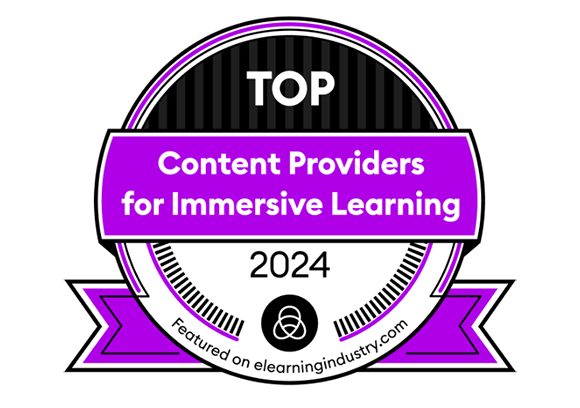Home :: Immersive Learning ::
Story Based Learning
Drive Higher Engagement and Enhance Transferability of Learning


The human brain is hardwired to learn from stories, picking up valuable lessons from other people’s experiences. By using a compelling story, you can improve learner engagement and retention by:

Introducing the learners to new ideas.

Pushing them to rethink and
re-evaluate their assumptions.

Encouraging and motivating them to push their boundaries.
Value of Story Based Approaches in Learning

Stories are engaging and easy to remember. They have a natural ability to influence us and are thus a valuable learning strategy, particularly in bringing about attitudinal and behavioral change.
A Story Based Learning approach works best when the objective is to teach principles and concepts that are abstract, seem uninteresting, or are difficult to appreciate. For example, topics such as soft skills, leadership, rules & regulations, code of conduct, etc. are all great candidates for Story Based Learning.
How Our Story Based Approaches Create Desired Learning Outcomes

Simplifies Complex Subjects: The storytelling approach can help break down a complex or abstract subject by making it relatable and easy to assimilate.

Sensitizes Learners: Our Story-Based Learning approach highlights nuances in situations and sensitizes learners on issues they are likely to encounter on the job.

Drives Attitudinal and Behavioral Change: A well-laid-out story helps learners emotionally connect with the characters and situations. With that, it becomes easier to encourage attitudinal and behavioral change.

Drives Desired Decision Making: The storytelling approach lends itself to letting learners make decisions during training. In doing so, they get to understand the consequences of their choices.

Enables Learner Action: With learners making decisions within stories, you can enable them to perform the desired action in the real world.

EI Expertise in Story Based Learning
EI uses the right blend of captivating narrative and Instructional Design principles to design immersive learning experiences and connect learners meaningfully to the content.
- Nuanced characters and situations
- Learning centered around people’s experiences
- Clear beginning (background), middle (build-up with challenges), and a logical ending (takeaway explaining the required action in the real world)
- Structured learning path
- Narrative aligned to specific learning outcomes
Versatility of Stories in Learning Strategies

Microlearning:
Delivering stories through microlearning is a great strategy, which can be done through animations, interactive videos, iPDFs, and bite-sized modules.

Gamification and Game Based Learning:
Integrating game elements and storytelling draws on the learners’ innate curiosity. You can use story chapters as individual milestones or hide clues in the game to move the story forward.

Personalized eLearning:
With this strategy, the narrative is used as a thread to organize learning content. There may be one or more stories throughout the training, or a story may branch off into other paths as relevant.

Flexibility of Mobile Learning:
With this strategy, learners can practice decision
-making in a safe virtual setting. It encourages them to consider alternative actions, influence the story’s outcome, and weigh the consequences of their decisions.

Ranked as a Top Content Provider for Immersive Learning in 2024
Case Studies

How a Large Entertainment and Theme Park Chain Improved Sales and Customer Service with Next Gen eLearning










